The Essence of Sencha: Japan's Beloved Green Tea
Sencha, a cornerstone of Japanese tea culture, offers a captivating experience. Unlike other teas, Sencha's distinctive needle-shaped leaves reflect its unique processing. This meticulous method preserves the compounds responsible for its bright, grassy notes and complex umami-sweet flavor. Interestingly, the flavor profile shifts with each season's harvest, providing a continually evolving experience. You might be interested in: How to master...
Understanding Sencha Grades
The world of Sencha extends beyond a single variety. Understanding the differences between premium and everyday grades is crucial for brewing. Gyokuro, a premium shade-grown Sencha, develops a richer, sweeter flavor. Contrast this with Fukamushi Sencha, a deep-steamed type known for its bolder character. These differences significantly impact your brewing approach, influencing water temperature, steeping time, and even the ideal vessel. Knowing these nuances unlocks the full potential of each grade.
The Growing Popularity of Sencha
This vibrant green tea has captivated tea lovers globally. The global Sencha tea market, valued at USD 3.2 billion in 2024, is projected to grow at a CAGR of 8.5% through 2032. This growth is fueled by a rising consumer focus on wellness and organic products, particularly in North America and Europe, where specialty tea shops are thriving. Find more detailed statistics here: Sencha Tea Market This increasing demand reflects a global appreciation for Sencha's distinct qualities. For further information on tea, consider visiting the Tevello Blog.
Brewing for Optimal Flavor
Proper brewing unlocks the true essence of Sencha. Like a chef balancing ingredients, Sencha brewing involves a delicate interplay of water temperature, steeping time, and leaf quantity. This precision ensures the delicate flavors and aromas are fully extracted, creating a balance of bitterness, sweetness, and umami. The entire process, from warming the teapot to the final pour, becomes a mindful ritual, enriching the sensory experience.
Essential Tools: Selecting Your Sencha Brewing Arsenal
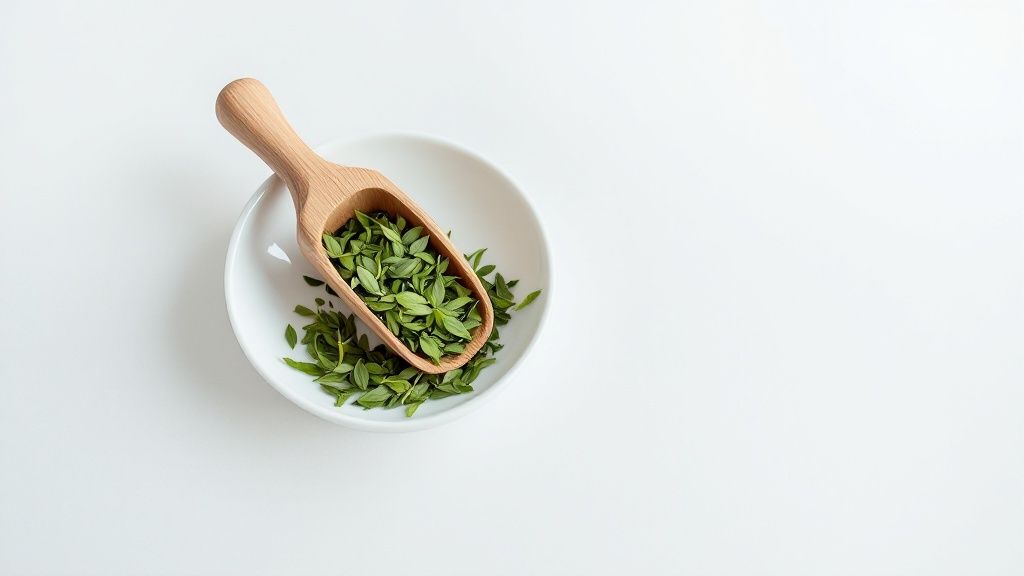
Elevating your Sencha experience starts with the right equipment. Choosing carefully transforms brewing from a simple task into an art form. This involves understanding not only the basic tools, but also the subtle ways each piece interacts with Sencha's delicate flavors.
The Kyusu: A Sencha Brewing Essential
The kyusu, a traditional Japanese teapot, is essential for brewing Sencha. Unlike typical teapots, the kyusu often has a fine mesh strainer built into the spout. This design improves the extraction of flavor from the tea leaves. The kyusu's shape also ensures even pouring, enhancing the brewing process. The result is a richer, more nuanced cup of Sencha compared to using a standard teapot.
Choosing Your Cups: Material Matters
Your choice of teacup can also impact your Sencha experience. The cup's material subtly influences aroma perception and even the perceived temperature. For instance, porcelain cups retain heat well and enhance delicate aromas, making them excellent for appreciating Sencha's complex fragrance. Other materials like clay or glass offer their own unique sensory benefits.
Temperature Control Solutions: A Practical Approach
Controlling temperature is crucial when brewing Sencha. Luckily, there are practical solutions for every budget and lifestyle. Variable temperature kettles offer precise control, simplifying the process. For a more traditional method, a stovetop kettle and a thermometer work just as well. The goal is to reach the optimal brewing temperature of 160-180°F (70-82°C) to unlock Sencha's full flavor.
Brewing Tools and Accessories: Finding What Works for You
While specialized tools can be helpful, they aren't essential for making excellent Sencha. Some tea lovers use digital thermometers for accurate temperature control. However, simple methods, like adding a measured amount of cold water to boiling water, work well too. Basic timers help achieve consistent steeping times. You can also explore other tea-related products, such as those found on Buy Me Japan, or even consider complementary items like certain health supplements to enhance your overall wellness routine.
The following table compares different brewing equipment suitable for preparing Sencha. It highlights the advantages and disadvantages of each, helping you select the best tools for your needs.
Sencha Brewing Equipment Comparison: A comparison of different teapots and brewing vessels suitable for Sencha preparation
| Equipment Type | Material | Advantages | Disadvantages | Best For |
|---|---|---|---|---|
| Kyusu | Clay/Porcelain | Designed for Sencha, excellent pouring control, built-in strainer | Can be fragile, requires careful handling | Traditional Sencha preparation, enhancing flavor and aroma |
| Gaiwan | Porcelain | Versatile, allows for appreciation of tea leaves, easy to clean | Requires practice for optimal brewing, can be hot to handle | Experimenting with different Sencha varieties, observing leaf unfolding |
| Glass Teapot | Glass | Allows visual appreciation of brewing process, easy to clean | Can retain less heat, may not be ideal for delicate Sencha | Casual brewing, appreciating the visual aesthetics |
| Standard Teapot | Various | Widely available, affordable | May not have optimal strainer for Sencha, pouring can be less controlled | Everyday brewing, less emphasis on nuanced flavor |
As you can see, each type of brewing equipment offers its own unique benefits and drawbacks. Choosing the right tools depends on your personal preferences and brewing style.
The Water Secret: Temperature Mastery for Perfect Sencha
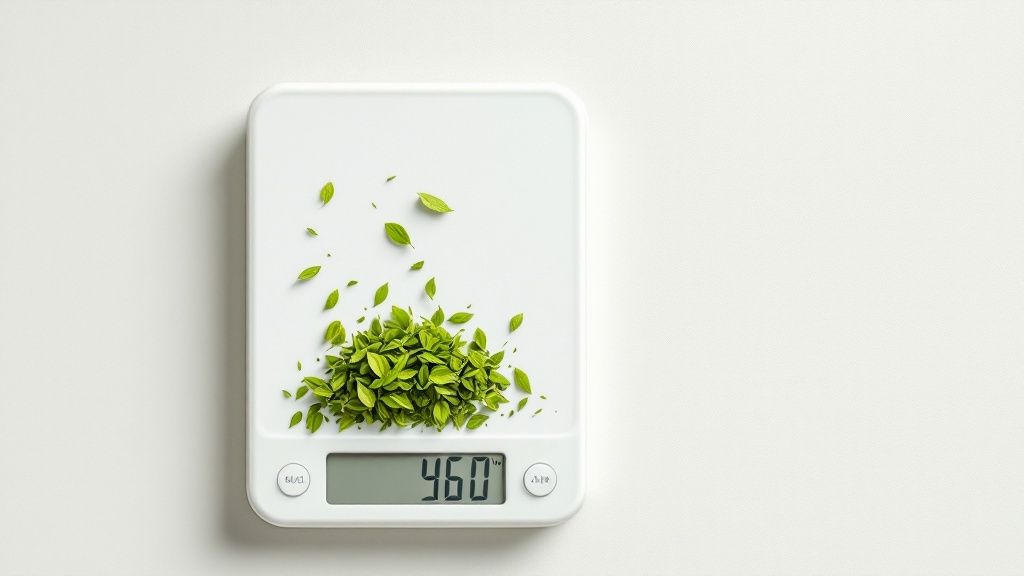
Water temperature is paramount when brewing Sencha. It's not just about hot or cold; it's the key to unlocking this green tea's complex flavor profile. The seemingly minor difference between boiling water and the recommended 160-180°F (70-82°C) range drastically affects the final cup.
This specific temperature range isn't random; it's based on the chemistry of the tea leaves.
The Science of Temperature and Flavor
Boiling water scorches Sencha leaves, releasing harsh catechins and tannins. These compounds create a bitter, astringent taste that overpowers the tea's natural sweetness and delicate aromas. That's why brewing instructions always emphasize using slightly cooled water.
Cooler water allows the leaves to gently unfurl, releasing beneficial amino acids and aromatic compounds. These contribute to Sencha's signature bright, grassy notes and subtly sweet umami flavor. Think of it like cooking vegetables: too much heat ruins the flavor; the right temperature brings out the best.
Beyond Temperature: The Impact of Water Quality
While temperature is the star, water quality is a crucial supporting player. The mineral content of your water significantly impacts flavor clarity and mouthfeel.
Hard water, rich in minerals, can cloud the brew and dull the delicate flavors. Overly purified water can result in a flat, lifeless cup. The ideal water has balanced mineral content, enhancing Sencha's natural characteristics without being overpowering. You might be interested in: How to master...
Improving your water doesn't require expensive systems. Simple techniques like using filtered or spring water can make a noticeable difference.
Mastering Temperature Control: Practical Tips and Tools
Achieving the perfect temperature doesn't require special equipment. You can use a thermometer to monitor the cooling process. Many modern kettles have temperature settings, simplifying things further.
For a traditional approach, try the Japanese method: warm the teapot and cups with boiling water, then use that warmed water to preheat your brewing vessel. Add the tea leaves and then the cooled water. This maintains a consistent temperature during brewing.
Consistent temperatures are key to unlocking Sencha's full spectrum of flavors. Incidentally, the global tea industry is booming, valued at USD 55.67 billion in 2024 and projected to reach USD 59.23 billion in 2025. This shows the growing global demand for tea, influenced by health and cultural factors. Find more statistics here: Global Tea Market.
This rising interest underscores the importance of proper brewing techniques. By understanding the interplay of temperature and water quality, you can elevate your Sencha brewing from routine to ritual, savoring each sip.
Sencha Brewing Instructions: The Definitive Method
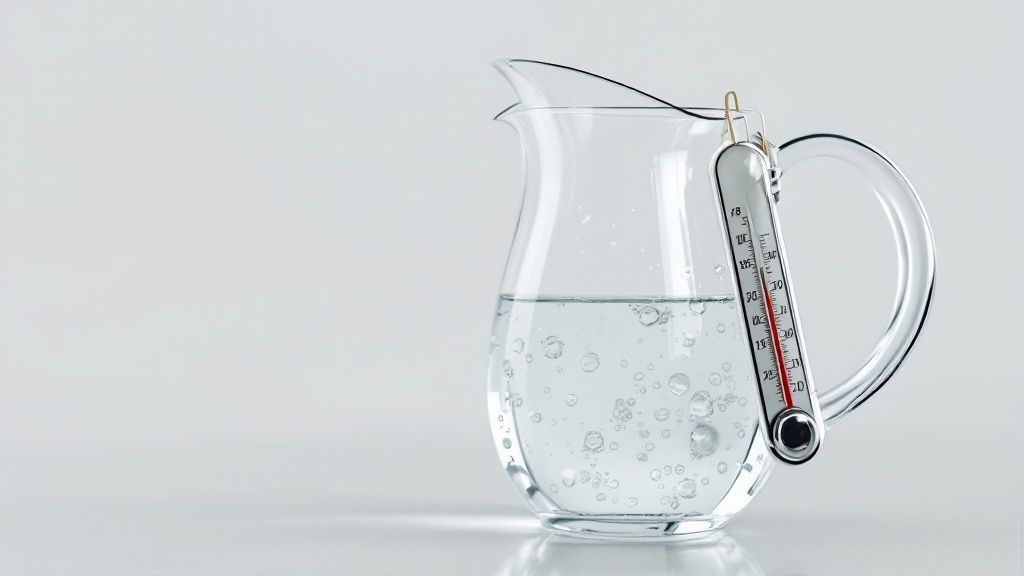
Now that we understand the basics, let's explore the precise, yet accessible, brewing process that elevates the Sencha experience. This method, honed by generations of tea masters, emphasizes both accuracy and a mindful approach.
Leaf-to-Water Ratio: Finding the Right Balance
The first crucial step involves mastering the leaf-to-water ratio. This essential factor varies depending on the Sencha grade. For instance, Gyokuro, a premium grade, demands a higher leaf-to-water ratio than standard Sencha because of its rich, concentrated flavor. This higher ratio ensures a balanced brew, avoiding both bitterness and weakness.
To help guide your brewing process, the following table outlines recommended parameters for various Sencha grades. It provides a great starting point for achieving the perfect cup.
Sencha Brewing Parameters Detailed guidelines for water temperature, steeping time, and leaf quantity for different grades of Sencha.
| Sencha Grade | Water Temperature | Leaf Quantity (per 8 oz/237 ml water) | First Infusion | Second Infusion | Third Infusion |
|---|---|---|---|---|---|
| Gyokuro | 140-160°F (60-70°C) | 2-3 tsp | 2 minutes | 3 minutes | 4 minutes |
| High-Grade Sencha | 160-170°F (70-75°C) | 1-2 tsp | 1 minute | 1.5 minutes | 2 minutes |
| Standard Sencha | 170-180°F (75-80°C) | 1 tsp | 45 seconds | 1 minute | 1.5 minutes |
| Fukamushi Sencha | 170-180°F (75-80°C) | 1-1.5 tsp | 30 seconds | 45 seconds | 1 minute |
These parameters offer a solid foundation. Feel free to adjust them based on your personal preferences as you become more familiar with different Sencha varieties.
The Art of Pouring: A Gentle Approach
The pouring technique itself is crucial for preventing bitterness. The Japanese circular pouring method, distributing tea evenly among cups in several rounds, promotes balanced flavor development. It also minimizes leaf agitation, which preserves the delicate aromatics. This mindful practice transforms brewing into a meditative ritual.
Timing the Steep: The Critical First Minute
The initial steeping time significantly influences the final flavor profile. The first 60 seconds are especially important. This is when the most subtle flavors and aromas are released. Over-steeping, even briefly, can introduce unwanted bitterness. Precise timing is therefore essential for achieving the perfect balance.
Visual and Aromatic Cues: Signs of a Perfect Brew
Observe the visual and aromatic cues as your Sencha steeps. The liquor should transform into a vibrant green hue, while the aroma should be fresh and vegetal-sweet. These sensory signals indicate a well-brewed cup and offer a preview of the complex flavors to come. Just like a chef tasting their dish, these cues provide valuable insights.
Multiple Infusions: Exploring New Depths
Sencha leaves offer the delight of multiple infusions, each revealing unique flavor dimensions. For subsequent infusions, slightly increase both the water temperature and steeping time. This allows you to fully appreciate the tea's evolving complexity. Each infusion is like a new chapter in the Sencha story.
Customization: Tailoring Your Sencha Experience
These instructions provide a solid starting point, but personal customization is key. Adjust the parameters based on your specific Sencha variety, your individual taste preferences, and even the surrounding temperature. Experimentation is part of the enjoyment, and with practice, you'll refine your method to create the perfect cup every time. This personal touch enhances the Sencha ritual.
Ancient Wisdom vs. Modern Techniques: Finding Your Path
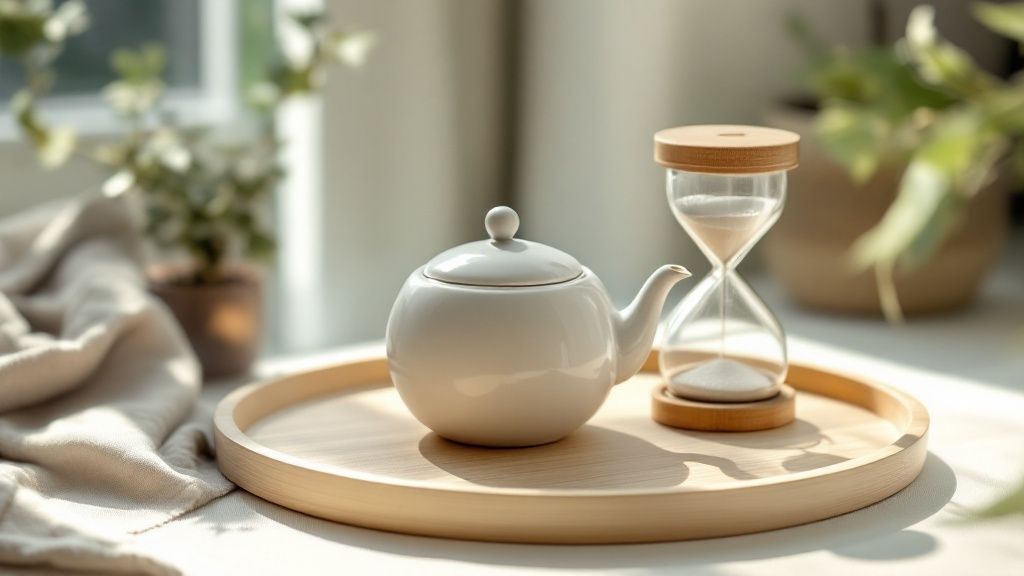
Traditional Sencha brewing methods, rooted in Japanese tradition, are often praised for their exceptional results. However, modern techniques offer a level of convenience that doesn't necessarily mean sacrificing quality. This section explores the subtle differences between these approaches, helping you find the Sencha brewing instructions that best fit your lifestyle.
The Kyusu Method: Embracing Tradition
The kyusu, a traditional Japanese teapot, is essential to the traditional Sencha brewing method. Its design, frequently incorporating a built-in strainer and a uniquely shaped spout, optimizes water flow and tea leaf infusion. This leads to a distinct flavor profile compared to other brewing methods.
The kyusu method often produces a richer, more complex cup of Sencha. It emphasizes the subtle umami notes that are a hallmark of high-quality Sencha. This traditional approach also creates a mindful ritual, enhancing the overall experience.
Western-Style Brewing: Adapting for Convenience
Western-style brewing, often using a standard teapot or infuser, offers a simpler way to prepare Sencha. While it may not perfectly capture all the nuances achieved with a kyusu, it provides a practical option for newcomers or those short on time.
By carefully adjusting factors like water temperature and steeping time, you can still brew a satisfying cup. This adaptation reflects how tea drinking habits have changed over time.
Cold Infusion: A Modern Twist
Cold brewing Sencha has become increasingly popular as a refreshing way to enjoy this tea. This method extracts different flavor compounds, creating a smoother, less astringent brew with a distinct sweetness.
Cold infusion is perfect for warm weather and offers an easy way to enjoy Sencha's health benefits. It demonstrates the versatility of this special tea.
Modern Infusers: Balancing Convenience and Quality
Modern infusers, ranging from simple mesh balls to more complex temperature-controlled devices, offer a wide array of Sencha brewing options. These tools emphasize convenience while striving to preserve the tea's true flavor.
Understanding how an infuser's material and design impact water dispersion and extraction is key to maximizing flavor and aroma. For example, infusers with larger openings allow greater leaf expansion and richer flavor release.
Finding Your Brewing Path: Balancing Tradition and Modernity
Adapting Sencha brewing for a modern lifestyle doesn't mean abandoning tradition altogether. Many tea experts believe that certain aspects of traditional preparation, such as precise water temperature and leaf-to-water ratios, are crucial for optimal flavor.
Other elements, however, like the specific brewing vessel, can be adapted without sacrificing much. This allows for a personalized Sencha experience, balancing traditional principles with individual preferences. The rising interest in natural and sustainable products like Sencha is apparent in the growth of the organic tea market.
In 2024, this market was valued at USD 1.13 billion and is projected to reach USD 1.32 billion in 2025. Learn more: Organic Tea Market Report. This growth reflects increasing consumer demand for healthy and environmentally conscious choices. Ultimately, the best Sencha brewing instructions are the ones that allow you to consistently enjoy a delicious and satisfying cup, fitting your lifestyle and enhancing your appreciation of this remarkable tea.
Troubleshooting: Rescuing Your Sencha From Common Mistakes
Even with the most precise sencha brewing instructions, things can sometimes go wrong. This section covers some common brewing issues and offers expert advice on how to fix them, ensuring your Sencha always tastes its best.
Bitterness: Taming an Overpowering Brew
Overly bitter sencha is often the result of water that's too hot or steeping for too long. Adding more water might seem like an easy fix, but this dilutes the tea's delicate flavor profile.
Instead, try rapidly chilling the brewed tea. This stops the extraction process, preventing the bitterness from getting worse. Another trick used by tea masters is adding a pinch of salt to counteract the bitter notes.
Weakness: Boosting a Lackluster Brew
Weak Sencha isn’t always caused by water that’s too cold. Often, it's due to not using enough tea leaves or not properly pre-heating your teaware.
If your brew is lacking flavor, try increasing the leaf-to-water ratio for your next cup. Make sure your teapot and cups are warmed beforehand. This helps maintain the ideal brewing temperature, allowing the leaves to unfurl and release their full flavor.
Cloudiness: Achieving Crystal-Clear Infusions
Cloudy Sencha can be disappointing, especially when brewing high-quality leaves. This often happens due to mineral interactions in the water or improper pouring technique.
Try using filtered or spring water to minimize cloudiness from mineral deposits. Also, pay attention to your pouring technique. The traditional Japanese circular pouring method helps prevent over-agitating the leaves, which can cause cloudiness.
Storage: Preserving Sencha's Delicate Profile
Even perfectly brewed Sencha can be ruined by improper storage. Sencha, particularly high-grade varieties, is sensitive to air, light, and moisture, all of which can degrade its flavor.
Store your Sencha in an airtight container in a cool, dark place. This protects the leaves from oxidation and preserves their vibrant flavor. Vacuum-sealed containers offer optimal freshness, especially for premium Sencha. Learn more in our article about How to Master Sencha Brewing.
Mastering the Art of Brewing: Consistent Results
By understanding these common problems and using these simple solutions, you can brew excellent Sencha every time. Like any skill, practice and attention to detail are essential. Over time, you’ll develop a better understanding of your tea and equipment, allowing you to refine your technique and consistently brew the perfect cup.
The Sensory Experience: Appreciating Your Perfect Sencha
After carefully brewing your sencha, it's time to truly appreciate the final product. The sencha experience transcends a simple beverage; it's a mindful ritual engaging all your senses. This practice reveals the remarkable complexity of this exceptional tea.
From Leaf to Cup: A Visual Journey
Begin by observing the brewed sencha. The color should be a vibrant jade green, reflecting the freshness of the leaves. This visual appeal is the first sign of a well-brewed cup. Cloudiness, however, can indicate problems with water quality or brewing technique.
Aromatic Delights: Unlocking Sencha's Fragrance
Next, inhale the aroma. A perfect sencha offers a distinctive vegetal-sweet fragrance. Look for notes of fresh grass, seaweed, and a touch of sweetness. This complex aroma profile is a key indicator of correct preparation, hinting at the delicate flavors to come. Much like a perfumer, a skilled sencha brewer balances these subtle aromas.
A Symphony of Flavors: Exploring Sencha's Taste
Now, savor the taste. Sencha's flavor unfolds in stages across your palate. The initial taste should be a bright, grassy freshness, transitioning to a subtle sweetness. A lingering umami finish, a savory depth often described as "brothy" or "seaweed-like," distinguishes truly exceptional sencha. This progression of flavors, similar to a musical composition, sets sencha apart.
Traditional Appreciation: Enhancing Your Connection
In Japan, sencha appreciation is often elevated to an art form. Traditional practices, such as the use of specific teaware and mindful pouring techniques, further enhance the sensory experience. These rituals encourage a deeper connection with the tea and its cultural significance.
Modern Pairings: Complementing Sencha's Subtlety
While tradition emphasizes purity, modern approaches explore sencha's versatility through food pairings. Consider light, savory snacks that complement, rather than overpower, sencha's delicate flavors. Avoid overly sweet or rich foods that could mask the tea's subtle nuances.
A Mindful Ritual: Connecting With Japanese Tea Culture
Whether drawn to sencha's meditative qualities or its notable health benefits, engaging all your senses elevates drinking tea into a richer, more fulfilling experience. Read also: Exploring the world of Sencha. This mindful ritual deepens your connection with Japanese tea culture, savoring each step from leaf to cup.
Ready to begin your own sencha journey? Explore the selection of authentic Japanese sencha teas at Buy Me Japan and experience the art of sencha brewing firsthand.

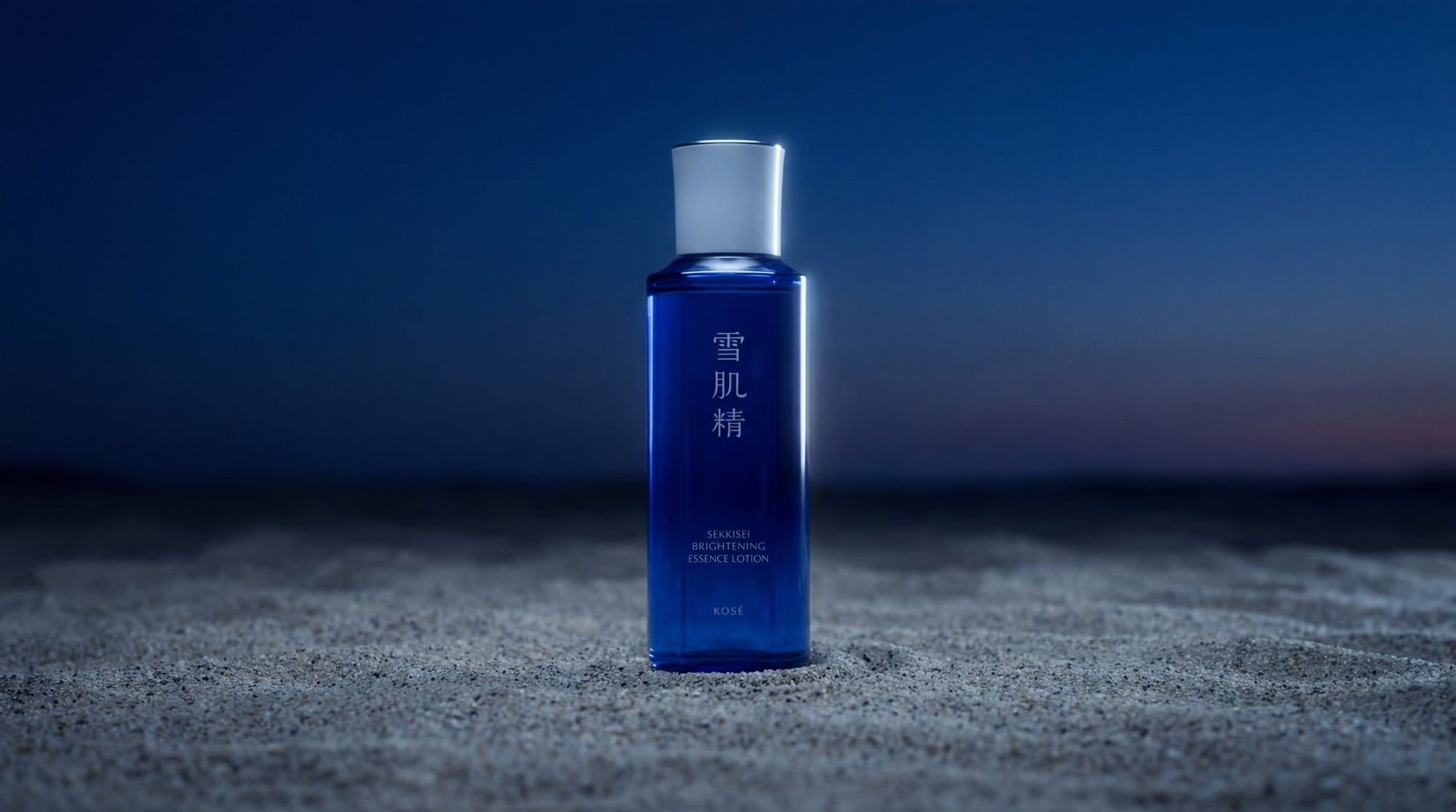


Share:
Easy Japanese Recipes: Quick & Delicious Dishes for Every Night
Top 7 Best Japanese Matcha Brands for 2025